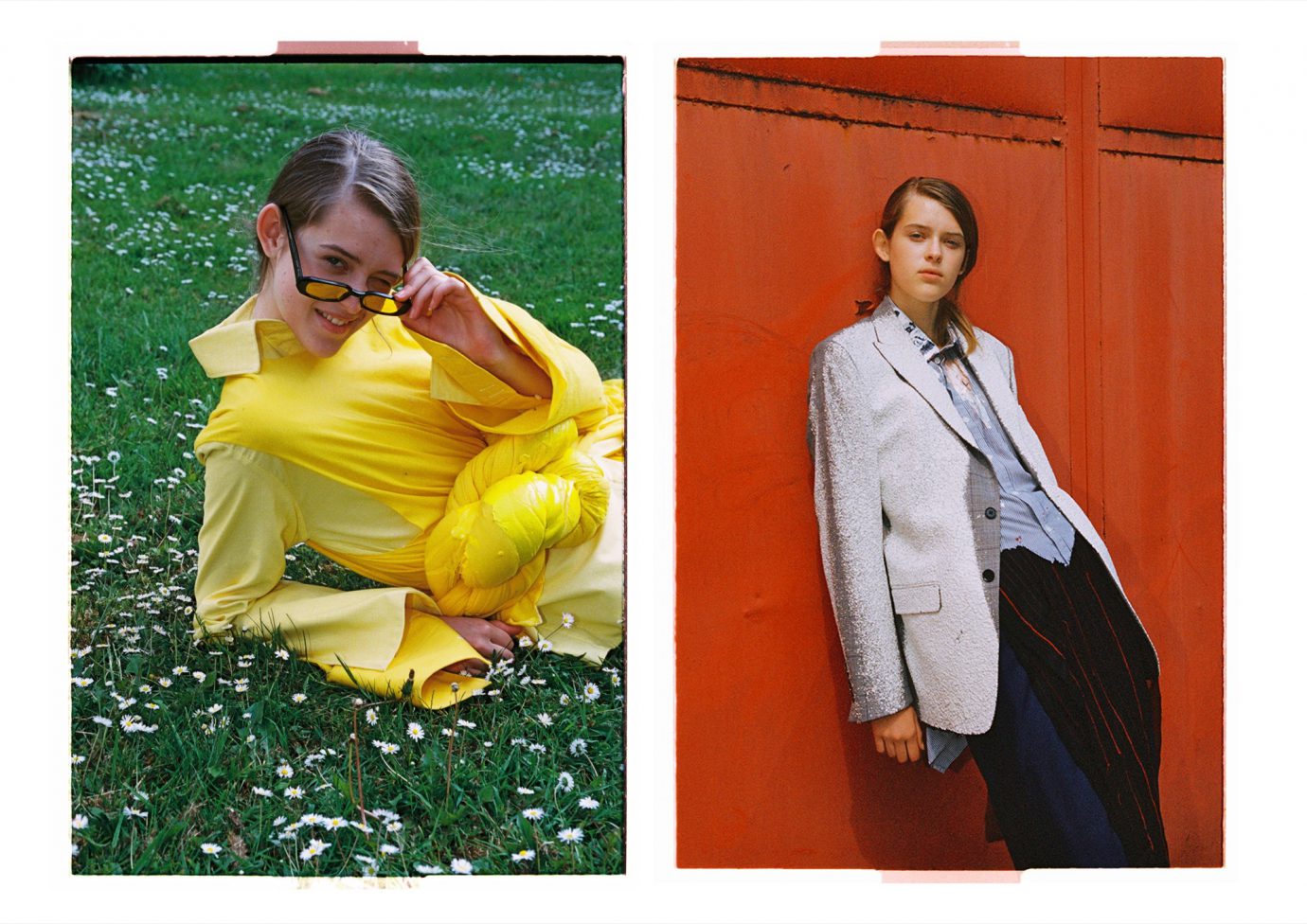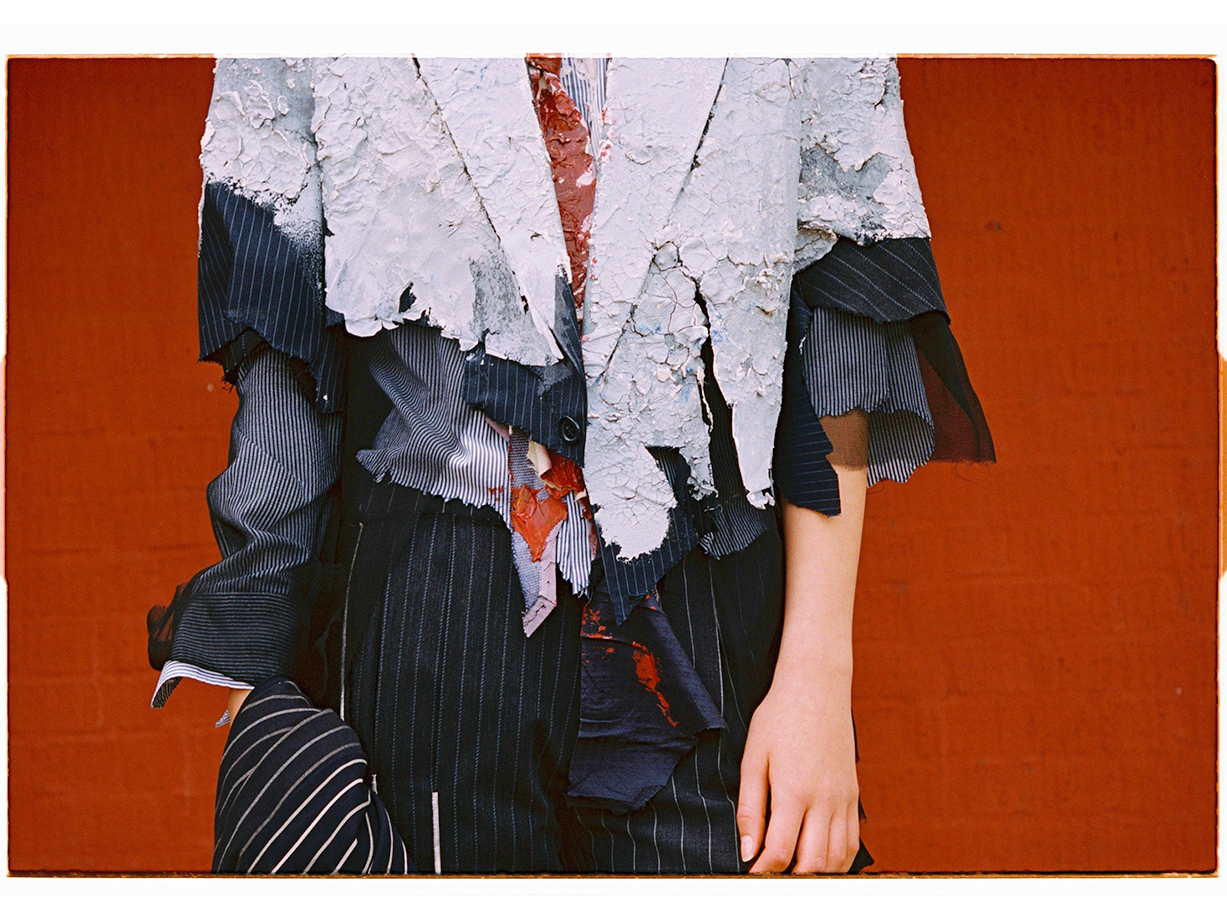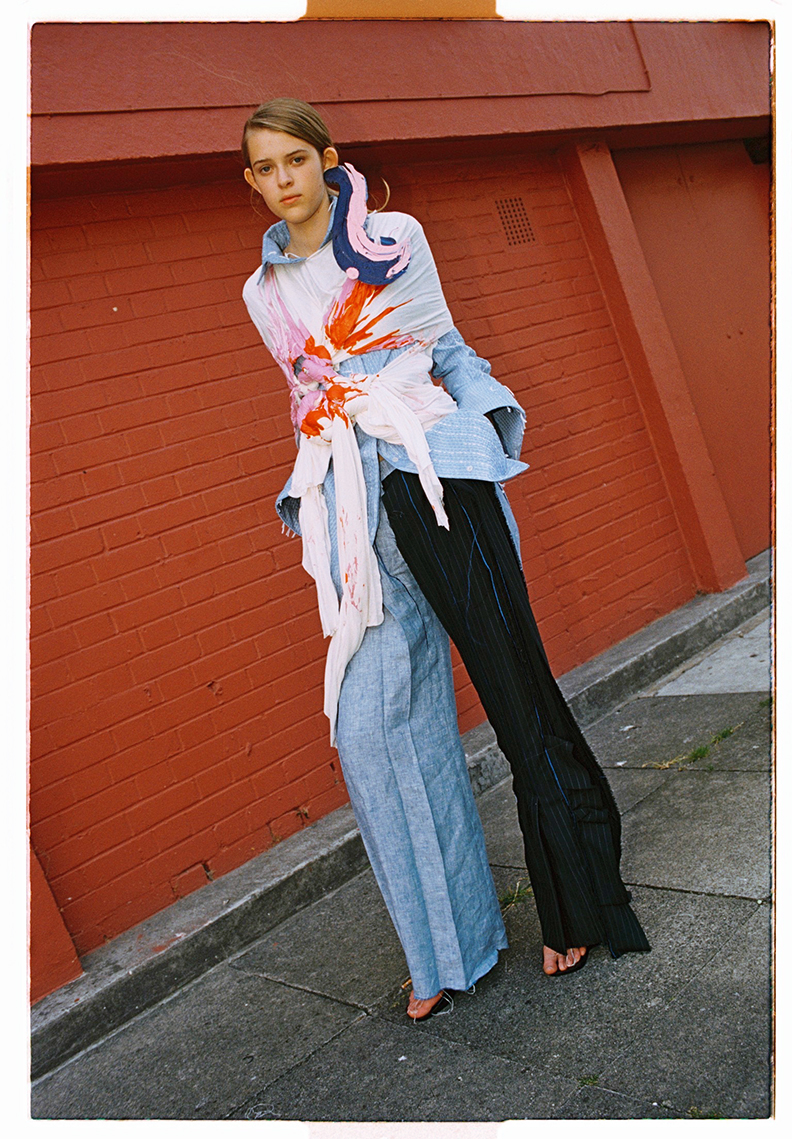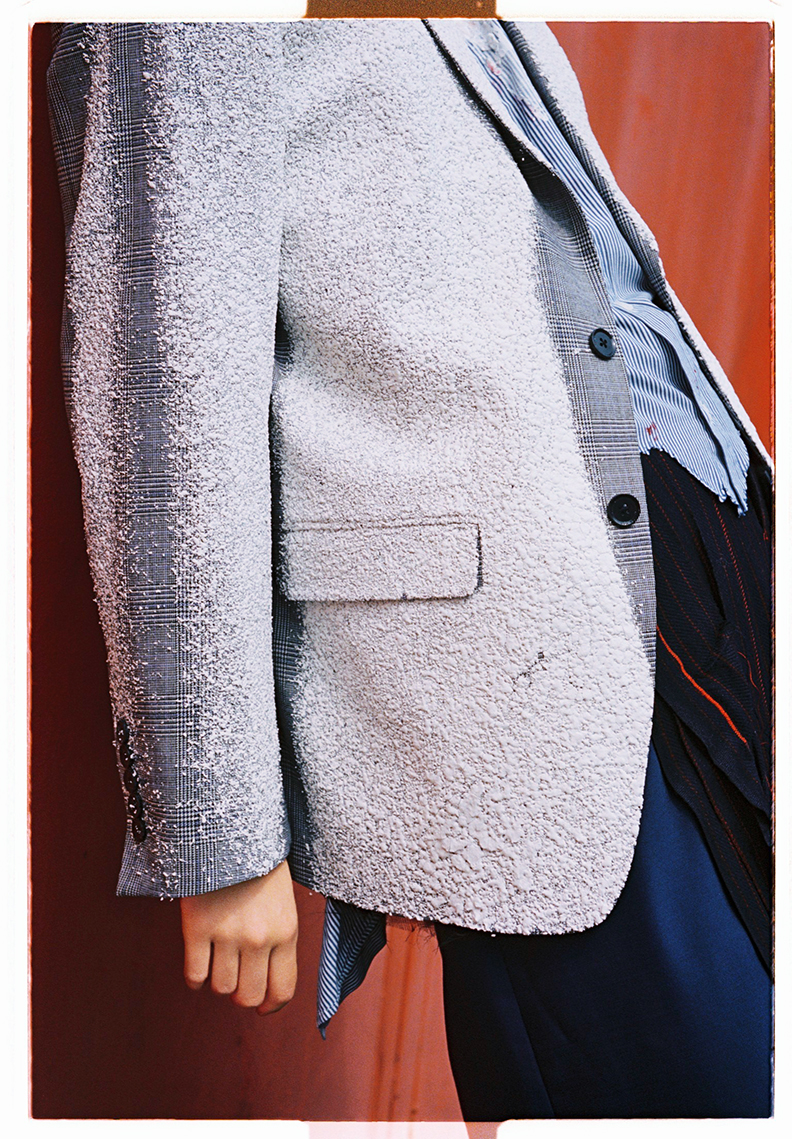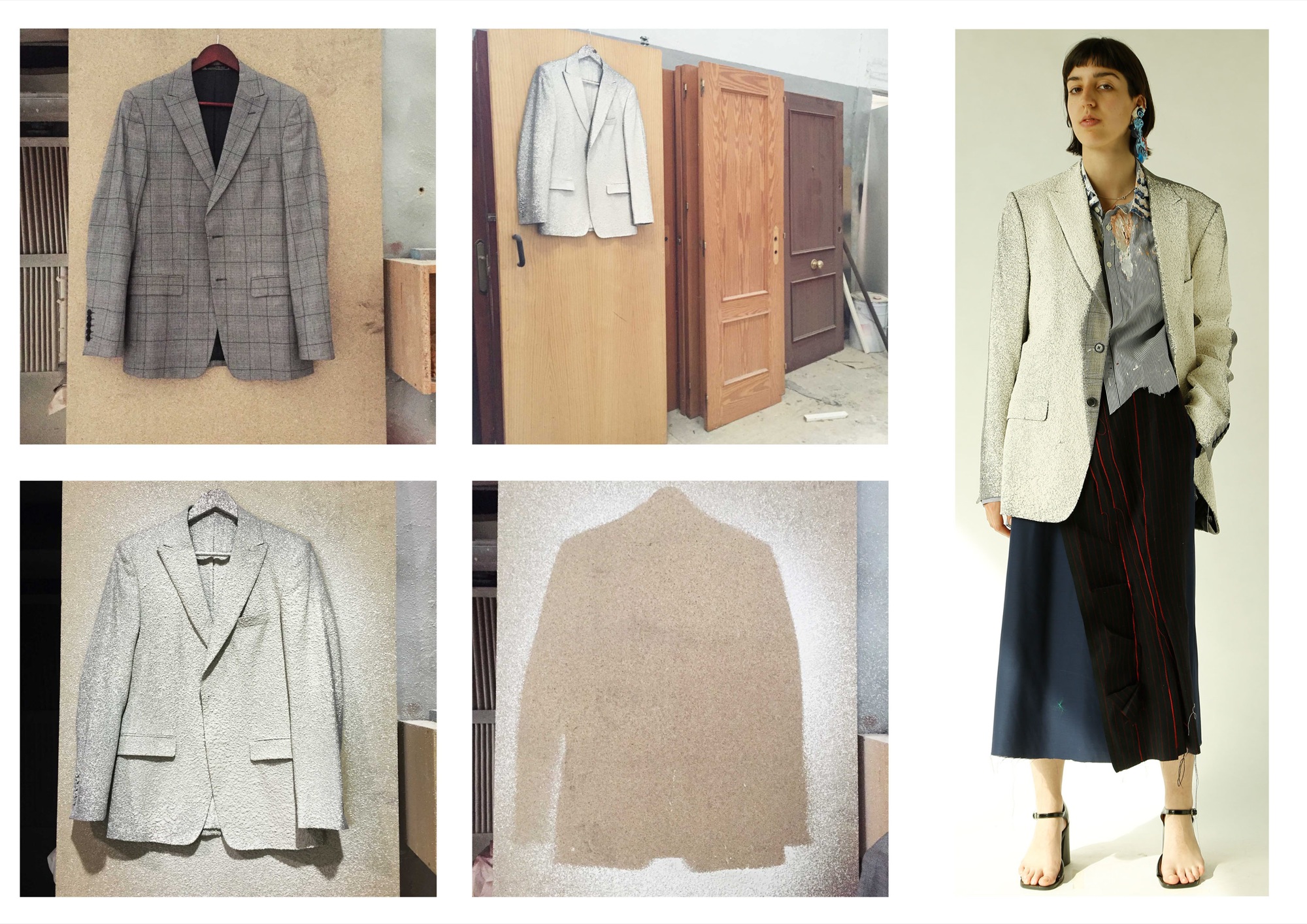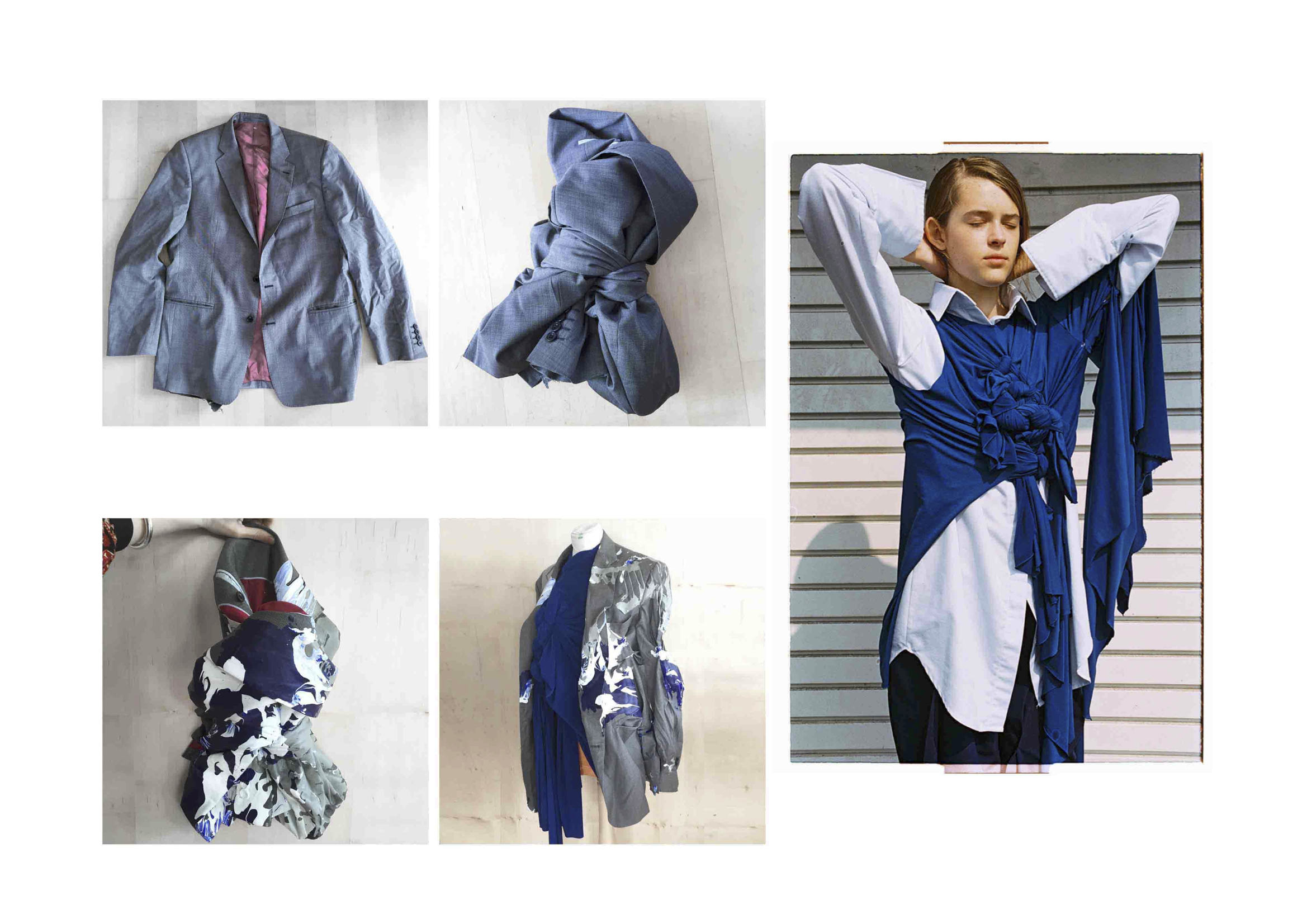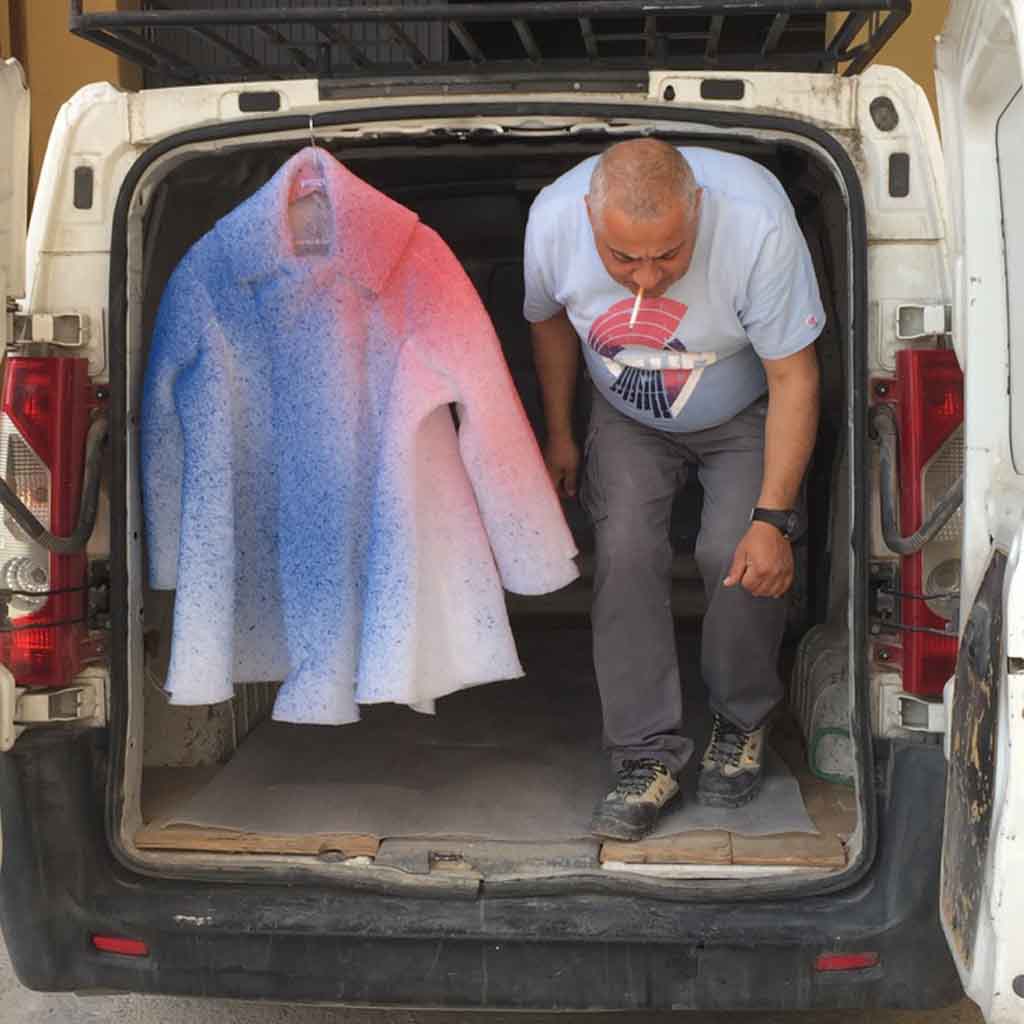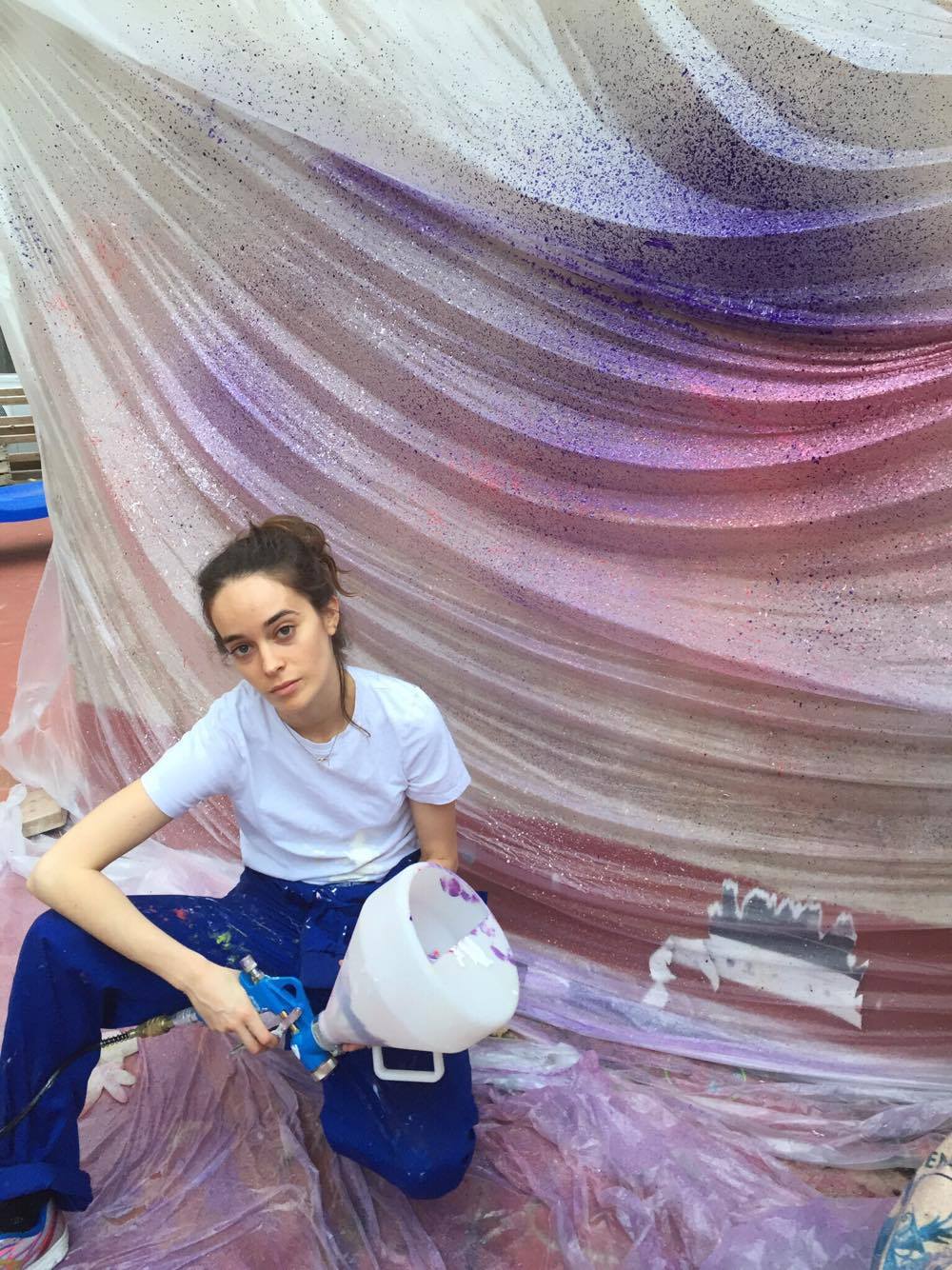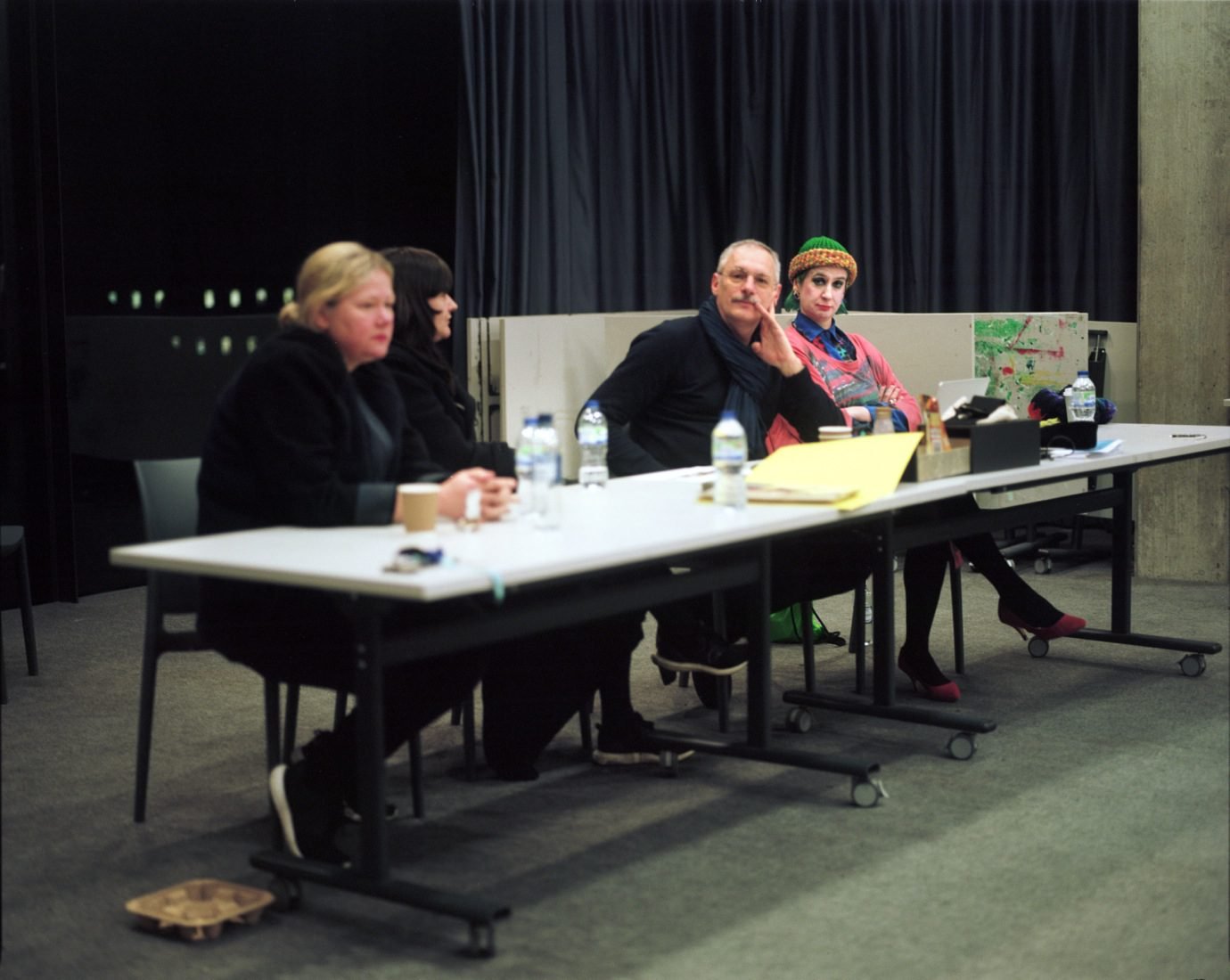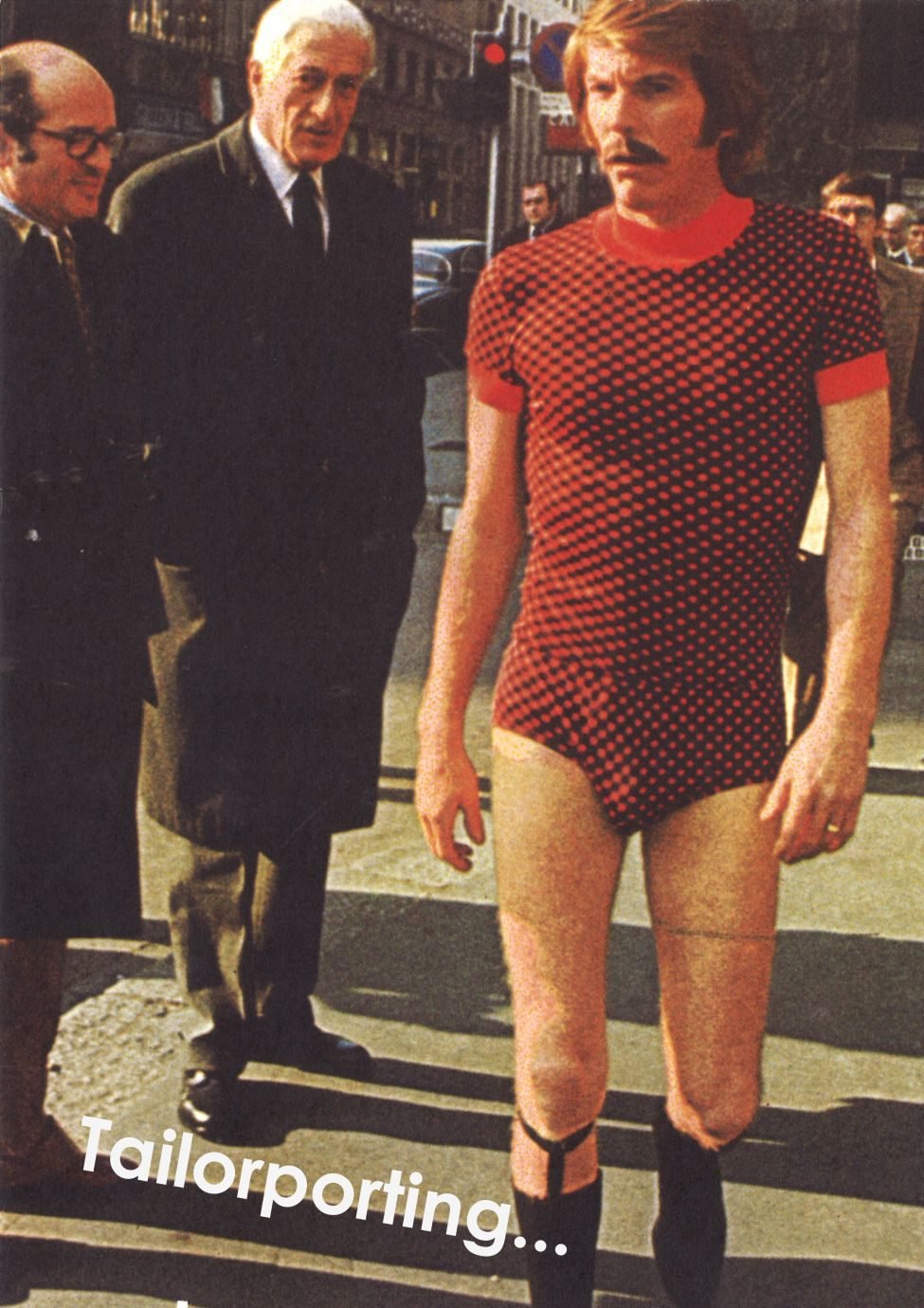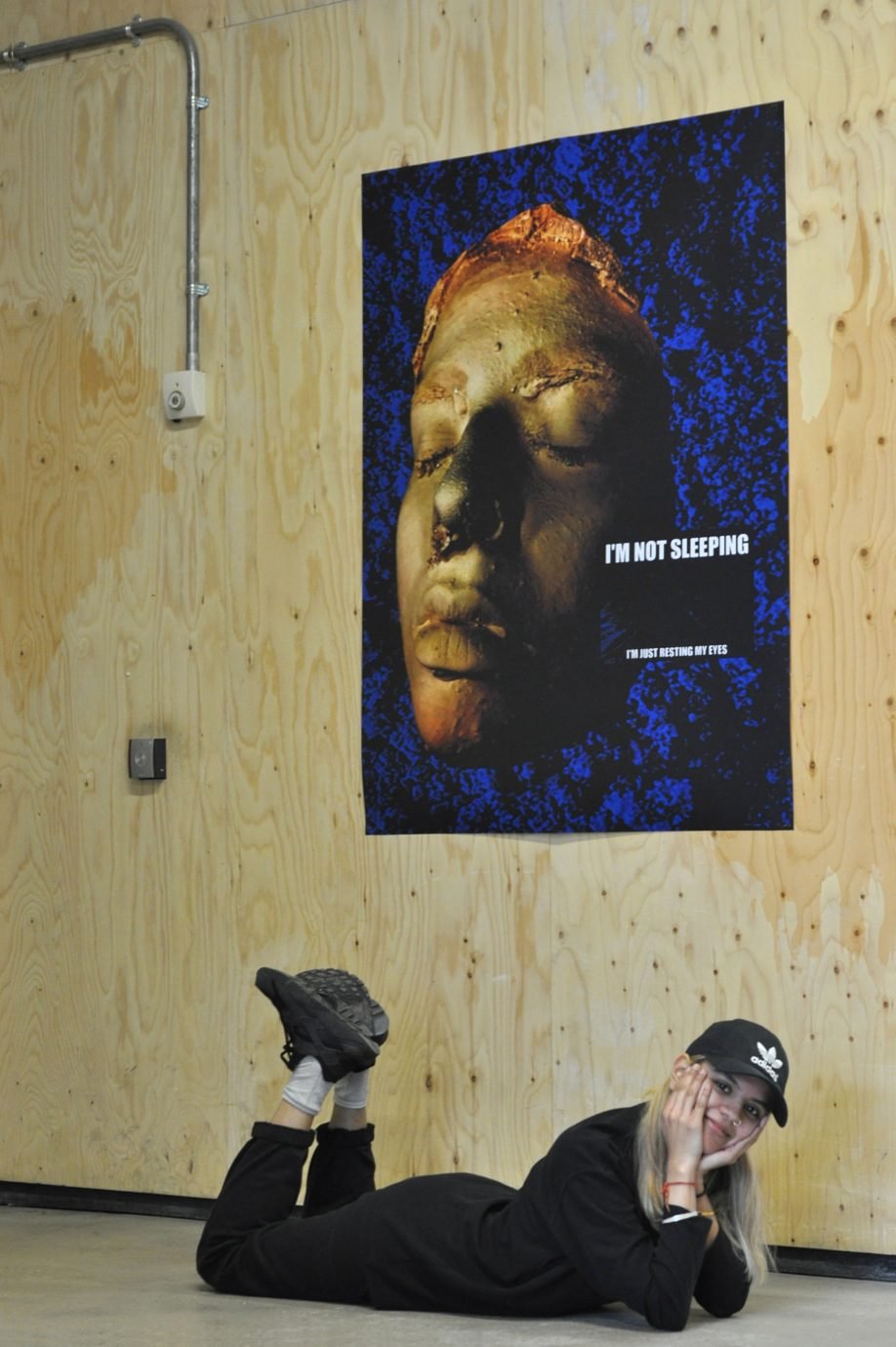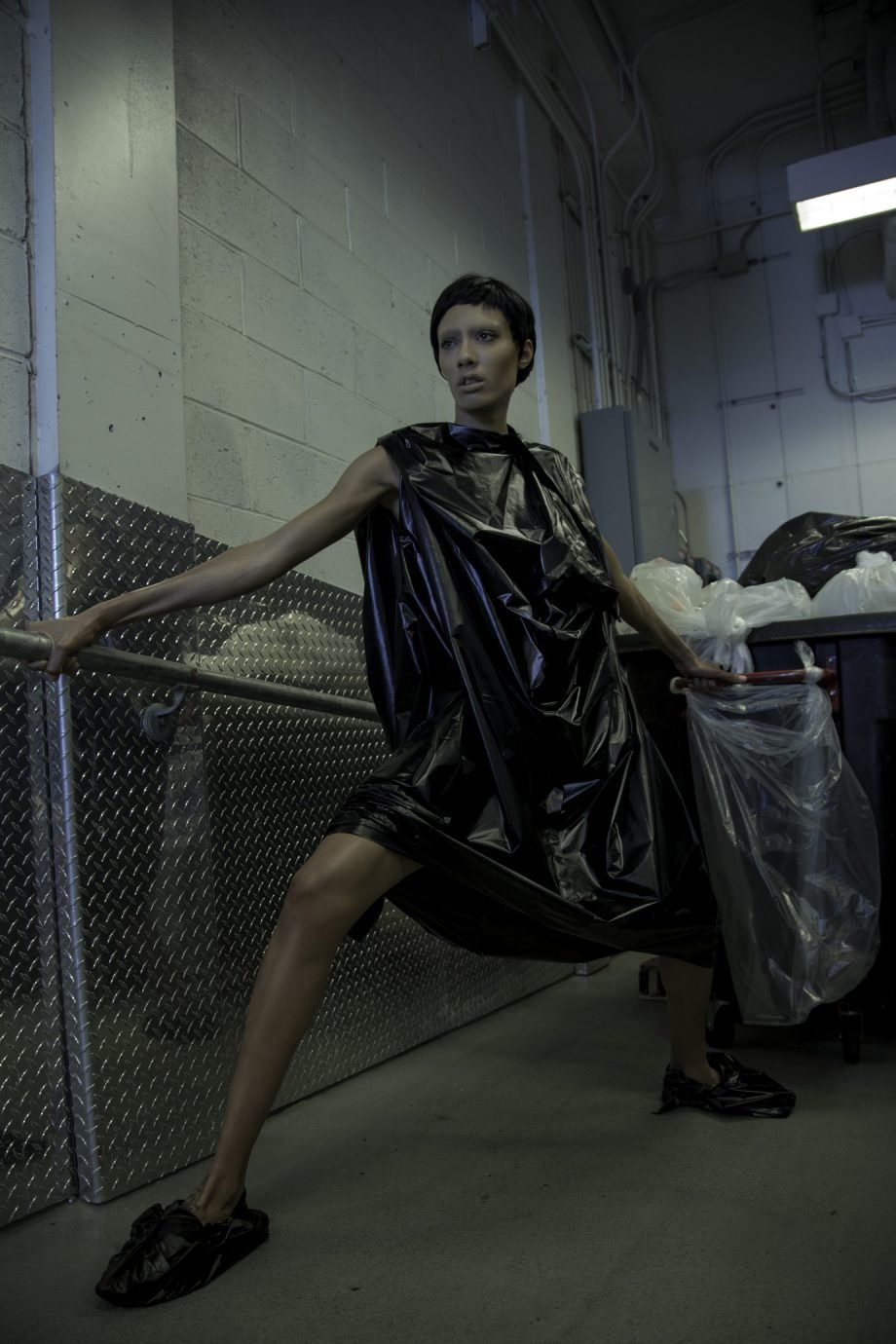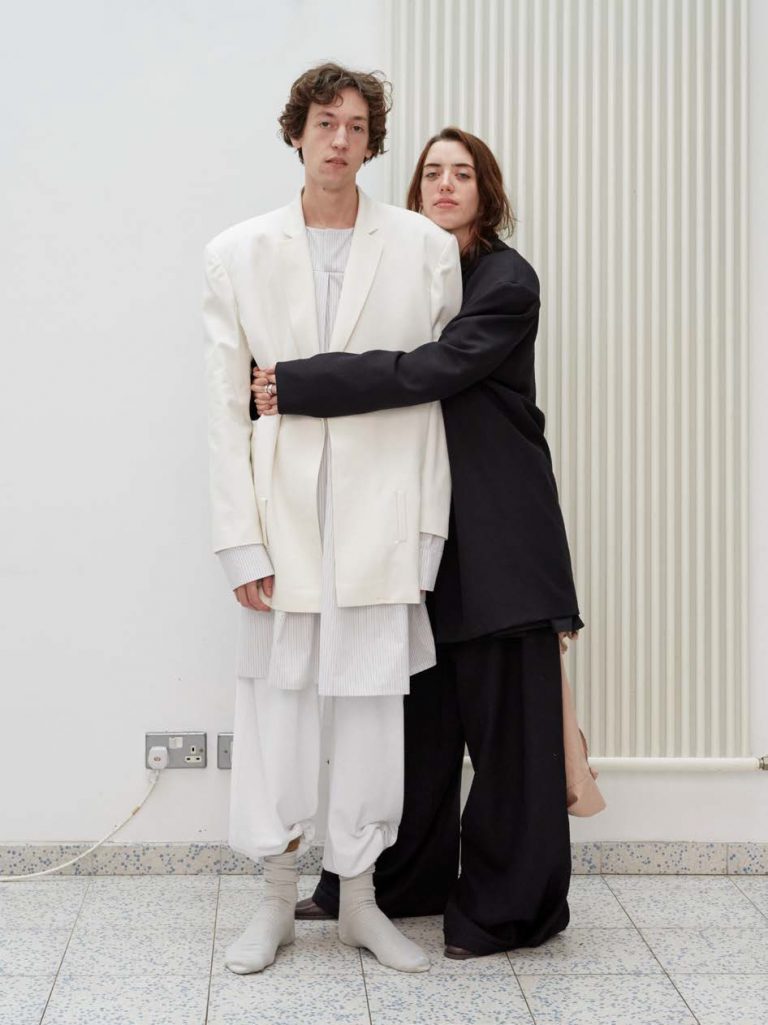“SINCE I WANTED TO INCORPORATE THE CONCEPT OF MISTAKES WITHIN THE COLLECTION, THERE WEREN’T REALLY THAT MANY THINGS THAT COULD GO WRONG.”
What was the conceptual starting point of your graduate collection?
From the beginning I knew I wanted to do tailored pieces, but I also knew I didn’t want them to have a rigid aesthetic. While thinking about the concept for my dissertation I stumbled upon Tanizaki’sanalysis of Japanese aesthetics, as well as Wabi Sabi, and I think that was really the starting point.The research was led by the acceptance of elements of hazard, of things that simply occur. I started looking at Lynda Benglis’ performances, David Hammons’ work and Claes Oldenburg’s sculptures.
How do you create a visual narrative out of an abstract concept?
When I start working on a project, I never really have the final outcome in mind. For me it’s all about the process of making, rather than achieving a certain goal, so I suppose the visual narrative comes as a result of testing a lot of different ideas. I never get too attached to a concept. If something doesn’t work, no matter how much time I spend on it, I move on and try out something else. This doesn’t mean I’m changing the concept, but rather that I’m trying different ways to get as close as possible to an outcome with the most powerful representation of my idea.
How did your collection develop during the course of the year? Did you face any serious challenges during the production process?
Since I wanted to incorporate the concept of mistakes within the collection, there weren’t really that many things that could go wrong. To me it was more important to make everything look cohesive and make sense as a whole. As a self-critic, though, I tended to experiment way too much within the final stages of making the collection. I was still trying out fabrics and design ideas a month before the show, and I ended up with way too many looks. Of course half of them were unnecessary, but I had to make them to see if they were working!
What does your development process usually look like?
I think I’m more of a hands on kind of person, I love toiling and working in real size. I don’t consider myself to be a great illustrator, and even though I like nice drawings, it’s not really my strength. And when it comes to surface prints, digital work is definitely a no-no. I really enjoy getting into dirty stuff, you know. For my prints I had the chance to collaborate with a construction worker from my hometown, Murcia. I was passing by one day and saw him using some machinery that I thought could be helpful for my work. I ended up spending a lot of time at the factory and we developed the technique together.

